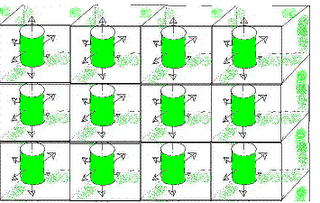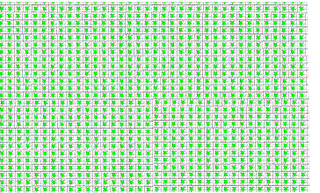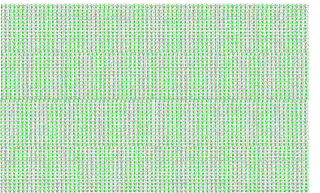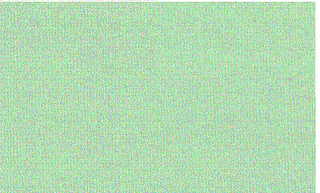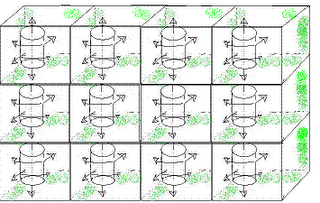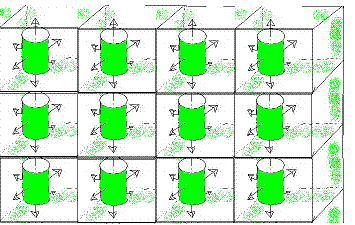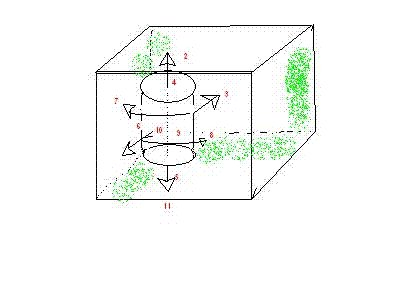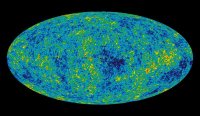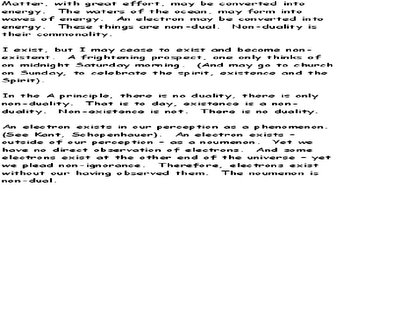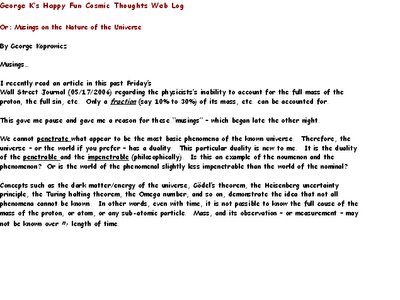The Fine Structure Constant of the UniverseIn the Physics/Perspectives section of the 28 July 2006 edition of Science (Vol 313) author David Kleppner (MIT, Dept. of Physics) reports in his article "A More Precise Fine Structure Constant" that the dimensionless quantity (or ratio) known as the fine structure constant has been measured to an uncertainty of 0.76 parts per trillion (B. Odom, D. Hanneke, B. D'Urso, G. Gabrielse, Phys. Rev. Lett. 97, 030801 (2006). The constant (or ratio) is expressed as given above.
The constant (or ratio) is expressed as given above.
What is intriguing to us about this constant is that if it were different by even a factor of ten, this universe would not exist.
And, this "constant" could not have existed in the time of the Big Bang and for several eons afterward as it is an expression of the relationship between the charge of the electron, the speed of light and Planck's constant. The universe was in a very, very dynamic state of flux during those original times and formative eons. The alpha (fine structure constant) ratio could not have existed in those times and must have formed over the period of time when matter and energy began to cool down and form into baryons, leptons and other distinct particles.
The thermodynamic equilibrium and the entropy of the non-local (or global) universe must have its origins with the background radiation temperature and fine structure constant (ratio) of the universe.
If (big if) the universe is "built" of embedded curved surfaces in a large surface as we suggested in our previous posting(s), the universe will continue to change. Eventually, the current universe may even undergo a phase change and increase the size of the so-called fine structure constant by altering the ratio between the speed of light in the newly forming phase structure of the global universe.
This proposed (hypothetical) change will bring about a universal global cooling or warming of the universe and ultimately affect the charge of the universal electrons. (Not to be confused with the current greenhouse theory of global warming of our planet - this warming is locally confined to our local environment).
A phase change in the global universal phase structure must bring about changes in the Planck constant, electron charge and even relativistic effects related to observations of electron charge.
In other words, even if we were able to do it, traveling along the current spacetime curvature to some future light cone might lead to an abrupt transition in the phase structure of the universe along that boundary curve. Ultimately, observing a future light cone might be catastrophic if one were to observe the future phase change of the universe. Traveling along this spacetime curvature might actually bring the observers in contact with a future, unexpected phase change of the universe. The current fine structure constant might conceivably change beyond its unknown boundaries. The nuclear structure of the global universal material might begin to fly apart.
Time travelers, beware...
Another implication suggested by Kleppner is what are the boundary conditions for this fine structure constant. We do not currently know now nor in the forseeable future.
If the inverse fine structure were to change by as much as 0.000000001 parts or even 0.00000001 parts (say in one of the proposed hypothetical phase change mechanisms above, would the universe retract or fly apart in an abrupt phase change. That is, if by observation a future light cone along the spacetime curvature, would some unsuspecting physicists bring about the end of the universe by altering the fine structure constant to the above mentioned parts. We just don't know.
Future cosmologists and physicists beware...
